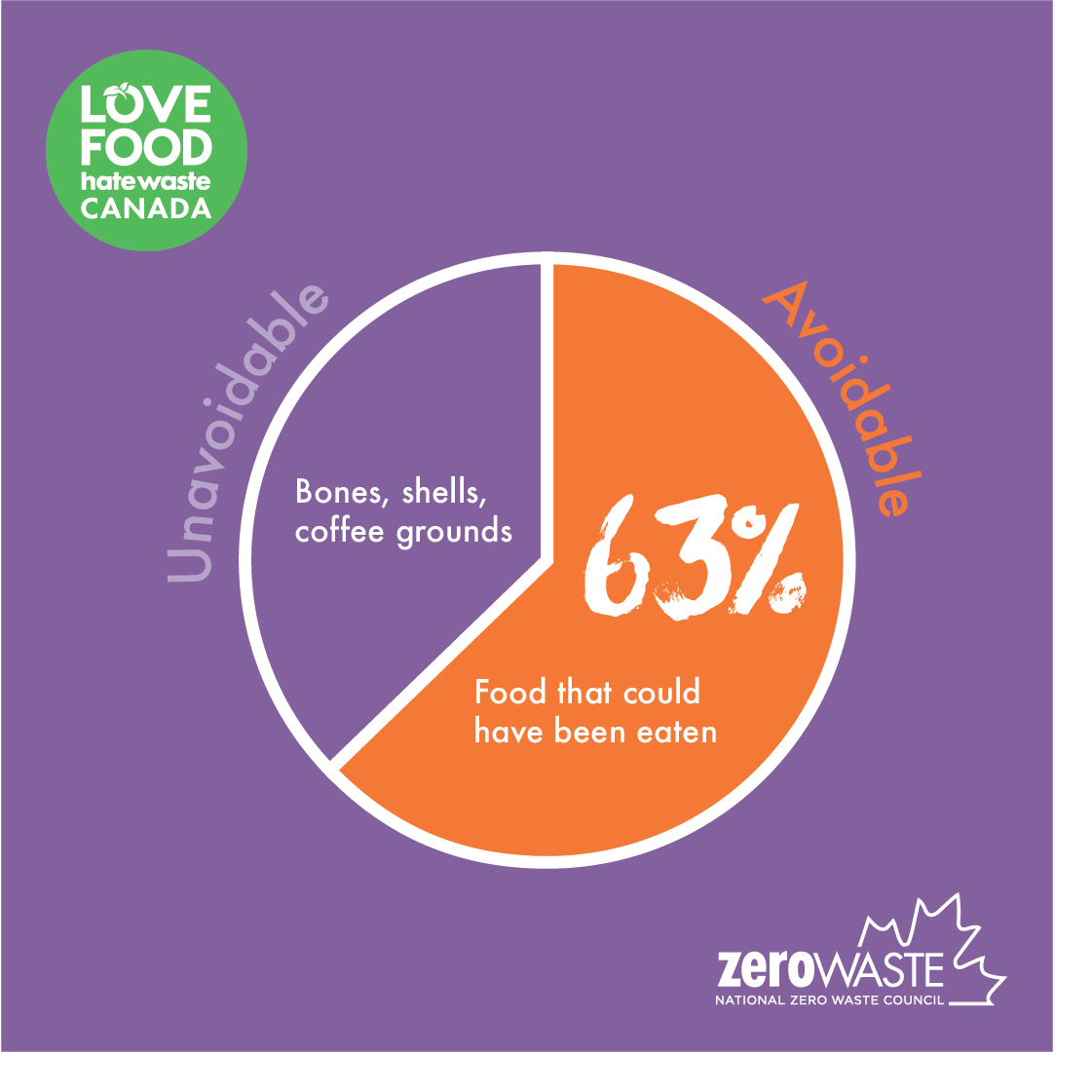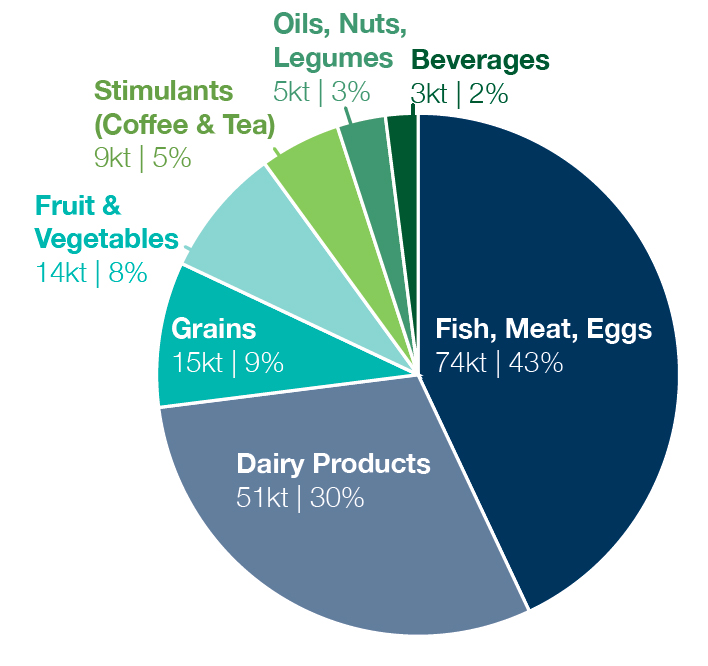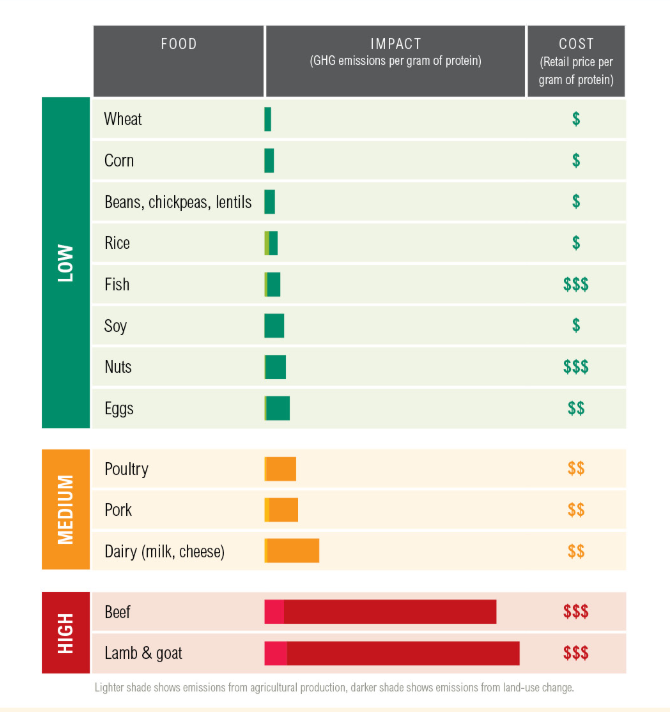Food and materials (e.g., consumer goods) are smaller sources of greenhouse gas emissions in our community than transportation and buildings, but they are still significant, especially from a consumption-based emissions perspective. Food accounts for 19% and materials for 9% of our community consumption-based emissions. Reducing the impact of consumption and waste will lower our environmental impact.
To become more climate friendly, we can:
- Reduce food waste
- Choose lower-carbon foods
- Support local farms to improve food security
- Adopt “lighter living” to reduce consumption and waste of materials
Reduce food waste
 Did you know that 63% of food waste in Canada could have been eaten? For the average Canadian household that amounts to 140 kilograms of wasted food and a cost of over $1,300 per year! Visit www.lovefoodhatewaste.ca for great tips about meal planning, food storage, and more. The District of Saanich is participating in the Love Food Hate Waste Canada campaign, and encourages residents to take part.
Did you know that 63% of food waste in Canada could have been eaten? For the average Canadian household that amounts to 140 kilograms of wasted food and a cost of over $1,300 per year! Visit www.lovefoodhatewaste.ca for great tips about meal planning, food storage, and more. The District of Saanich is participating in the Love Food Hate Waste Canada campaign, and encourages residents to take part.
Choose lower-carbon foods

Pie chart shows overall GHG emissions from all food consumed in Saanich in kilotons of carbon dioxide equivalent (ktC02e) using a Consumption-Based Emissions Inventory. For more information, see ecocity Footprint Report.
GHG emissions are generated in every step of the food system, including:
- Production:
- Land use change for crop and pasture land (e.g. deforestation, soil management)
- Energy used in farm vehicles and buildings (e.g. greenhouses)
- Production and use of fertilizers, pesticides, and other inputs
- Animals (methane from manure and from enteric fermentation from cows and other ruminants)
- Food processing and refrigeration
- Transportation
- Home and restaurant cooking (consider an electric induction stove!)
- Waste
Did you know that only about 7% of food’s total GHG emissions comes from transportation? Food type makes the biggest difference. See World Resources Institute Protein Scorecard below for example GHG emisisons from different food choices.

Support local food production to improve food security
Climate change affects agricultural production. Increasing local food production, both by supporting local farmers and growing your own in your backyard or a community garden is an important adaptation action.
Adopt “lighter living” to reduce consumption and waste of materials
There are many ways Saanich residents and businesses can shrink their consumption-based GHG impact, including:
- Rent, borrow, or share rather than buy your own (e.g. car sharing, the library, tool libraries, etc.)
- Repair rather than buy new (check out the local Repair Cafes!)
- Reduce throw-away packaging by bringing your own containers and bags
- When you need to buy, consider the lifecycle of the product, and when it makes sense look for:
- well-made, long lasting products
- minimal packaging
- recycled content and ease of recycling/composting the product
- third-party certification for eco-friendliness
- energy efficient and renewable energy design
- Take part in the second-hand economy. Many online tools and local businesses and non-profits make it easy, or you could host your own clothing swap!
- If a product is not useful for someone else when you’re done with it, recycle or compost it. Check out myrecylopedia.ca for tips about how to recycle just about everything and how to reduce and reuse, too!

